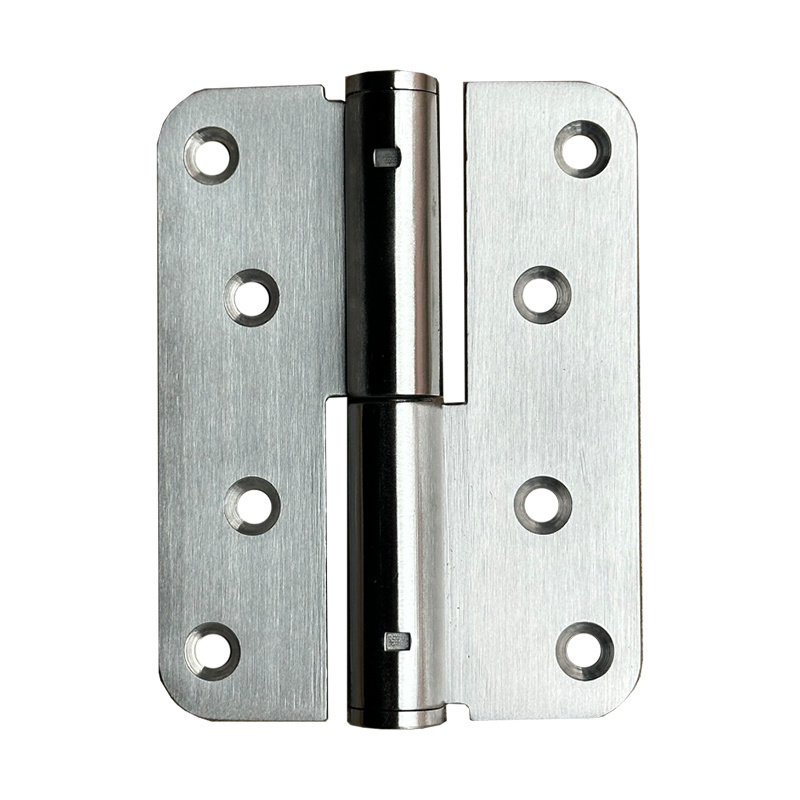Exploring the Versatility of Butt Hinges in Everyday Applications
2025-05-08

Exploring the Versatility of Butt Hinges in Everyday Applications
Table of Contents
- 1. Introduction to Butt Hinges
- 2. What Are Butt Hinges?
- 3. Key Applications of Butt Hinges
- 4. Benefits of Using Butt Hinges
- 5. How to Choose the Right Butt Hinges
- 6. Installation Guidelines for Butt Hinges
- 7. Maintaining Butt Hinges
- 8. Frequently Asked Questions
- 9. Conclusion
1. Introduction to Butt Hinges
When it comes to hardware components that are often overlooked yet crucial in our daily lives, **butt hinges** take center stage. These small yet mighty devices allow doors, cabinets, and gates to swing with ease, providing both functionality and aesthetic appeal. Understanding the versatility of butt hinges can significantly enhance our appreciation for their role in everyday applications.
2. What Are Butt Hinges?
Butt hinges are a type of hinge made up of two plates, also known as leaves, which are attached to a pivot pin. These plates are typically rectangular and can come in various materials, sizes, and finishes to suit different applications. Unlike other hinge types, butt hinges are usually mortised into the door and frame, allowing them to fit snugly and remain relatively concealed when the door is closed.
This design not only provides a clean look but also distributes weight evenly, making them ideal for heavy doors or gates.
3. Key Applications of Butt Hinges
Butt hinges are incredibly versatile, finding their way into various settings from residential to industrial. Let's explore their key applications:
3.1 Residential Applications
In residential settings, butt hinges are predominantly used on doors for rooms, closets, and cabinets. They are favored for their strength and durability, which is essential for doors that are frequently opened and closed. Additionally, their wide range of finishes allows homeowners to select hinges that match their interior decor.
3.2 Commercial Applications
In commercial buildings, butt hinges play a vital role in ensuring smooth operation of high-traffic doors, such as those found in offices, retail spaces, and restaurants. They can support larger, heavier doors, providing reliability under constant use. Moreover, they can be equipped with additional features like security measures or soft-close mechanisms to enhance functionality.
3.3 Industrial Applications
Butt hinges are indispensable in industrial settings, where ruggedness and robustness are paramount. They are often used in warehouses, factories, and shipping containers to support heavy equipment and large doors. Specialized butt hinges designed for extreme conditions can withstand harsh environmental factors, making them suitable for outdoor applications.
4. Benefits of Using Butt Hinges
Choosing butt hinges for various applications comes with numerous benefits, including:
1. **Durability**: Made from sturdy materials like stainless steel or brass, butt hinges resist wear and tear, ensuring long-lasting performance.
2. **Versatility**: Available in a range of sizes and finishes, they can be used in diverse applications, from residential to industrial.
3. **Aesthetic Appeal**: Butt hinges can be selected to match or complement the design of doors and interiors, maintaining visual coherence.
4. **Ease of Installation**: With simple installation guidelines, even DIY enthusiasts can successfully install butt hinges without professional assistance.
5. **Weight Distribution**: Their design allows for even weight distribution, which is crucial for the longevity of doors.
5. How to Choose the Right Butt Hinges
Selecting the right butt hinges for your needs requires careful consideration of several factors:
1. **Material**: Choose a material based on the environment where the hinge will be used. Stainless steel is ideal for outdoor settings due to its resistance to rust.
2. **Size and Weight Capacity**: Ensure the hinge can support the weight of the door or gate it will be attached to. Larger, heavier doors will require heavier-duty hinges.
3. **Finish**: Consider the finish of the hinge, which affects both durability and appearance. Options range from polished brass to matte black, allowing you to match the hinge to your decor.
4. **Type of Door**: Depending on whether you're working with a residential or commercial door, the hinge should be appropriate for the door's thickness and structure.
5. **Special Features**: Look for additional features like self-closing mechanisms or security features that enhance functionality.
6. Installation Guidelines for Butt Hinges
Installing butt hinges is a straightforward process that can be accomplished with the right tools and preparation. Here are the key steps to follow:
1. **Gather Tools**: You'll need a drill, screws, a screwdriver, a chisel, and a level.
2. **Measure and Mark**: Determine the height at which the hinges will be installed on the door and frame. Use a level to ensure they are straight.
3. **Mortise the Hinges**: If not pre-mortised, use a chisel to create a recess in the door and frame where the hinge plates will sit. This ensures the hinge is flush with the surface.
4. **Attach the Hinges**: Align the hinge plates with the mortised areas, and secure them using screws. Ensure the hinge operates smoothly before finalizing.
5. **Test the Door**: Open and close the door several times to ensure proper function and alignment.
7. Maintaining Butt Hinges
To ensure the longevity and functionality of butt hinges, regular maintenance is essential. Here are some maintenance tips:
1. **Clean Regularly**: Dust and dirt can accumulate on hinges, affecting their operation. Wipe them down with a damp cloth to keep them clean.
2. **Lubricate**: Occasionally apply a light lubricant, such as silicone spray or graphite powder, to the hinge pin to ensure smooth operation.
3. **Inspect for Damage**: Regularly check the hinges for signs of wear or corrosion, especially in outdoor settings. Replace any damaged hinges promptly to avoid door malfunction.
4. **Tighten Screws**: Over time, screws may loosen due to use. Periodically check and tighten screws to maintain secure attachment.
8. Frequently Asked Questions
1. What is the difference between butt hinges and other types of hinges?
Butt hinges differ from other hinge types in their design and functionality. They are mortised into both the door and frame, providing a flush finish, whereas other hinges like pivot hinges may be mounted externally.
2. Can butt hinges be used for exterior doors?
Yes, butt hinges can be used for exterior doors, especially when made from corrosion-resistant materials like stainless steel.
3. Are butt hinges adjustable?
Most butt hinges are not adjustable; however, some models have adjustable features that allow for fine-tuning after installation.
4. How do I know what size butt hinge to buy?
Measure the thickness of your door and the weight it needs to support. The hinge size should correspond to these measurements for optimal performance.
5. Can I paint butt hinges?
While butt hinges can be painted, it’s crucial to use paint designed for metal to ensure adhesion and durability. However, painting may affect their functionality, so it’s often best to choose a finish that complements your decor.
9. Conclusion
Butt hinges are a quintessential part of our everyday life, providing support and functionality to doors and gates across various settings. Their versatility, durability, and aesthetic appeal make them an ideal choice for both residential and commercial applications. By understanding the benefits, selection criteria, installation methods, and maintenance practices associated with butt hinges, we can appreciate their crucial role in enhancing our living and working environments. Whether you're a homeowner looking to upgrade your doors or a contractor seeking reliable hardware solutions, butt hinges are an essential element that should not be overlooked.
PREVIOUS:
Contact Us
E-mail :
ivyhinge@163.com
Phone/WhatsApp:
+86 18924942354
Address:
XIAOLAN TOWN,ZHONGSHAN cIty,GUANGDONG province,China




